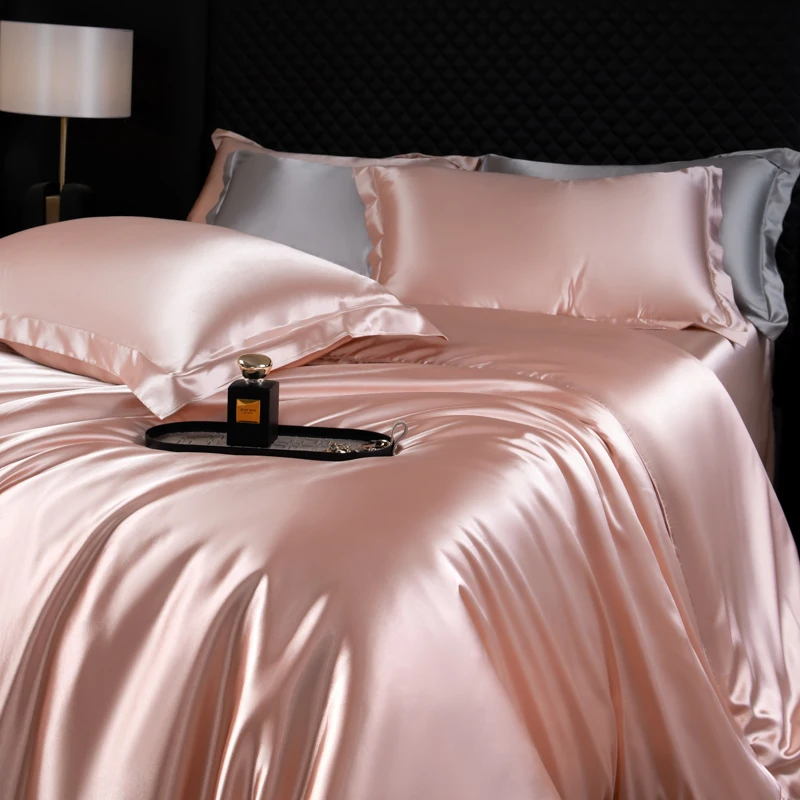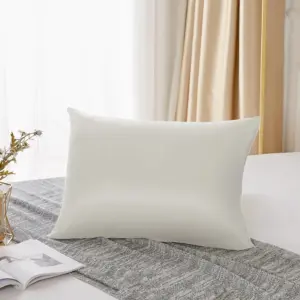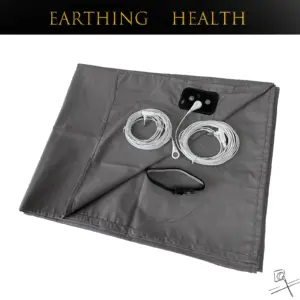Understanding the Art of Silk Bedding Layering
The art of silk bedding layering isn’t simply about piling luxurious fabrics on your bed—it’s a thoughtful approach to creating the perfect sleep environment. When done correctly, layering transforms an ordinary bed into a sumptuous retreat that enhances your sleep quality and overall wellbeing.
Proper bedding layering serves dual purposes: it’s both functional and aesthetic. Functionally, the right combination of layers works in harmony to regulate your body temperature throughout the night. Aesthetically, it creates a visually inviting centerpiece for your bedroom that beckons you to unwind.
What makes silk particularly special is how it maximizes these benefits. The natural properties of silk—including its exceptional temperature regulation, moisture-wicking capabilities, and gentle touch on skin and hair—are enhanced when layers work together. The amazing benefits of mulberry silk sheets become even more pronounced when incorporated into a well-designed bedding system.
Perhaps most importantly, different seasons require different approaches to layering. What works beautifully in winter might leave you uncomfortable in summer. This comprehensive guide will walk you through everything you need to know about creating the perfect silk bedding combination for every season, ensuring your sleep sanctuary remains comfortable year-round.
Essential Silk Bedding Components for Perfect Layering
Creating the perfect silk bedding experience requires understanding each component’s role in the complete guide to mulberry silk bed sheets system. Let’s explore the essential layers that work together to create your luxury sleep sanctuary.
The Foundation: Silk Fitted Sheet
The silk fitted sheet is where luxury begins—it’s the first layer that touches your body and sets the tone for your entire sleep experience. As your primary contact surface, this foundation deserves careful consideration.
Mulberry silk fitted sheets in the 19-25 momme weight range offer the ideal balance between durability and softness. Unlike cotton sheets that can trap heat, silk fitted sheets help maintain a consistent temperature throughout the night by:
- Wicking moisture away from your body
- Adapting to your body temperature
- Providing a frictionless surface that minimizes skin irritation
When selecting a fitted sheet, ensure proper depth to accommodate your mattress without slipping free during the night. The smooth, continuous surface creates the perfect foundation for building your luxury bedding ensemble.
The Comfort Layer: Silk Flat Sheet
Traditionally placed between the sleeper and heavier covers, the silk flat sheet adds a versatile comfort layer that enhances temperature regulation. This layer can be:
- Used conventionally under a duvet for cooler nights
- Folded down for decorative appeal
- Used alone as a lightweight cover during warm weather
- Wrapped around the body for gentle, breathable comfort
The flat sheet’s adaptability makes it essential for year-round comfort. Its lightweight nature adds minimal bulk while significantly enhancing the sensory experience of your bedding. When paired with a fitted sheet of the same material, it creates a consistent feel that enhances sleep quality.
The Sleep Surface: Silk Pillowcases
While all bedding components matter, silk pillowcases are non-negotiable elements of a luxury sleep setup. Even if you choose to incorporate other materials elsewhere, silk pillowcases offer direct benefits that other fabrics simply cannot match.
The benefits of silk pillowcases include:
- Reduced friction that prevents hair breakage and bedhead
- Minimized facial creases and sleep wrinkles
- Preserved skin moisture unlike absorbent cotton
- Natural hypoallergenic properties that benefit sensitive skin
For pillowcases, a 19-22 momme weight provides the perfect balance of durability and softness. Their immediate contact with your face and hair makes them perhaps the most important silk element in your bedding ensemble.
The Insulation Core: Silk-Filled Duvet/Comforter
The insulation layer is where silk truly demonstrates its remarkable temperature-regulating abilities. Unlike down that can overheat or synthetic fills that often trap moisture, silk-filled duvets and comforters provide consistent comfort through their natural properties:
- Silk fill adapts to body temperature, warming when you’re cold and cooling when you’re hot
- The lightweight nature of silk provides warmth without heaviness
- Natural resistance to dust mites and allergens makes silk fill ideal for sensitive sleepers
- Even distribution of fill prevents cold spots common in other comforters
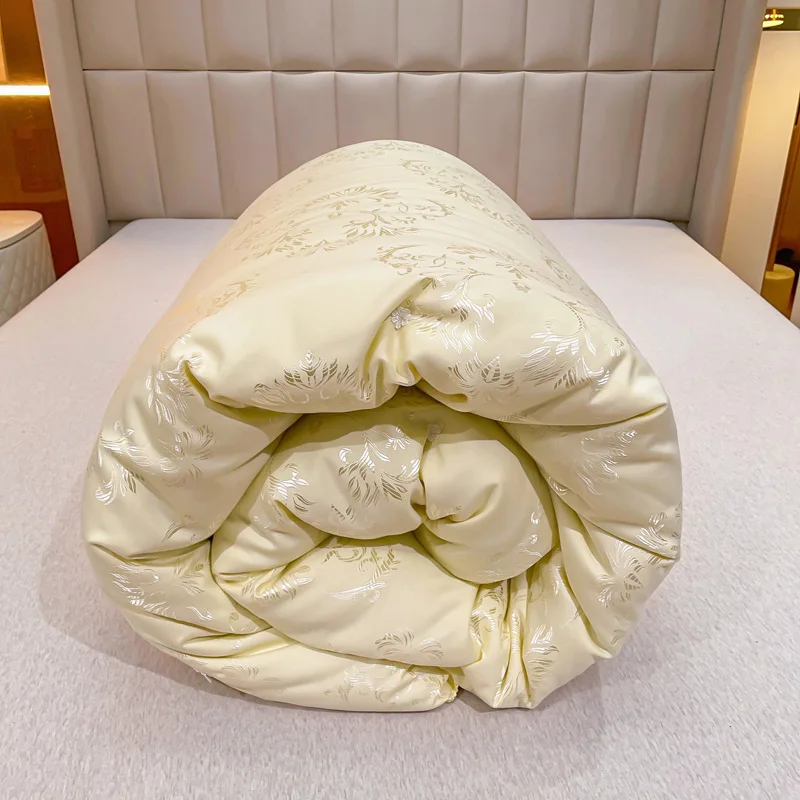
Understanding tog ratings—measures of thermal insulation—helps select the appropriate weight for different seasons. Lower togs (2-4.5) work well in summer, while higher togs (9-13.5) provide winter warmth.
The Protective Layer: Silk Duvet Cover
A silk duvet cover serves dual purposes: it protects your investment in a quality duvet while adding another luxurious layer to your bedding ensemble. When paired with a silk-filled duvet, a silk cover maximizes the material’s natural benefits.
The advantages of a silk duvet cover include:
- Easy cleaning compared to washing an entire duvet
- Additional temperature regulation properties
- Enhanced durability of your duvet investment
- Opportunity for seasonal color and pattern changes
Luxury silk bedding sets often include coordinated duvet covers that complement other components, creating a cohesive look while preserving the integrity of each layer.
Mastering Silk Combinations with Other Materials
While all-silk bedding represents the pinnacle of luxury, thoughtfully combining silk with complementary materials can enhance specific benefits and provide flexible options for different preferences and seasons. Understanding why people choose mulberry silk sheets helps in creating these strategic combinations.
Silk + Cotton: The Classic Blend
Combining silk and cotton creates a balanced bedding experience that offers both luxury and practicality. This pairing works particularly well for those new to silk bedding or seeking cost-effective options.
Effective silk-cotton combinations include:
- Silk pillowcases with cotton sheets for focused skin and hair benefits
- Cotton fitted sheet with silk flat sheet for a cooler sleep surface
- Silk duvet cover with cotton sheets for simplified care routines
- Cotton quilt with silk-filled pillows for balanced comfort
This combination offers temperature regulation superior to all-cotton bedding while providing durability in high-friction areas. The natural breathability of both materials complements each other, creating a sleep environment that adapts to your body’s needs.
Silk + Linen: Breathable Luxury
For warm sleepers or summer months, the silk and linen combination provides exceptional cooling properties with contrasting but complementary textures. This pairing enhances:
- Maximum breathability through both materials’ natural properties
- Interesting textural contrast between smooth silk and nubby linen
- Enhanced moisture-wicking for humid climates
- Visual interest through the different fabric appearances
Consider a linen fitted sheet with silk pillowcases and a lightweight silk duvet for the ultimate summer bedding arrangement. The slightly rougher texture of linen actually complements silk’s smoothness, creating a multi-sensory experience that feels intentionally curated rather than mismatched.
Silk + Cashmere/Wool: Ultimate Winter Comfort
When temperatures drop, combining silk with premium natural fibers like cashmere or wool creates unmatched warmth without sacrificing breathability. This luxury combination delivers:
- Exceptional insulation without the heaviness of synthetic materials
- Continued temperature regulation even in cold conditions
- Complementary moisture management properties
- Soft, enveloping comfort that remains breathable
Try a silk fitted sheet and pillowcases with a wool or cashmere blanket between your flat sheet and duvet for winter. This creates a sleep environment that insulates without overheating—the perfect balance for cold nights.
Strategic Layer Placement Table
| Layer Position | Summer Combination | Winter Combination | Transitional Seasons |
|---|---|---|---|
| Base Layer | Silk fitted sheet (19 momme) | Silk fitted sheet (22-25 momme) | Silk fitted sheet (22 momme) |
| Middle Layer | Silk flat sheet only or light cotton blanket | Silk flat sheet + wool/cashmere blanket | Silk flat sheet + removable light blanket |
| Top Layer | Lightweight silk duvet (4.5 tog) or just flat sheet | Heavier silk duvet (9-13.5 tog) with silk cover | Medium-weight silk duvet (7-9 tog) |
| Accents | Minimal – 2 silk pillowcases | Multiple pillows with silk cases, additional throw | Moderate – 2-4 pillows with silk cases |
Seasonal Adaptation of Silk Bedding Layers
One of silk’s greatest virtues is its adaptability across seasons. With strategic layering, you can maintain the perfect sleep temperature year-round while enjoying silk’s consistent benefits.
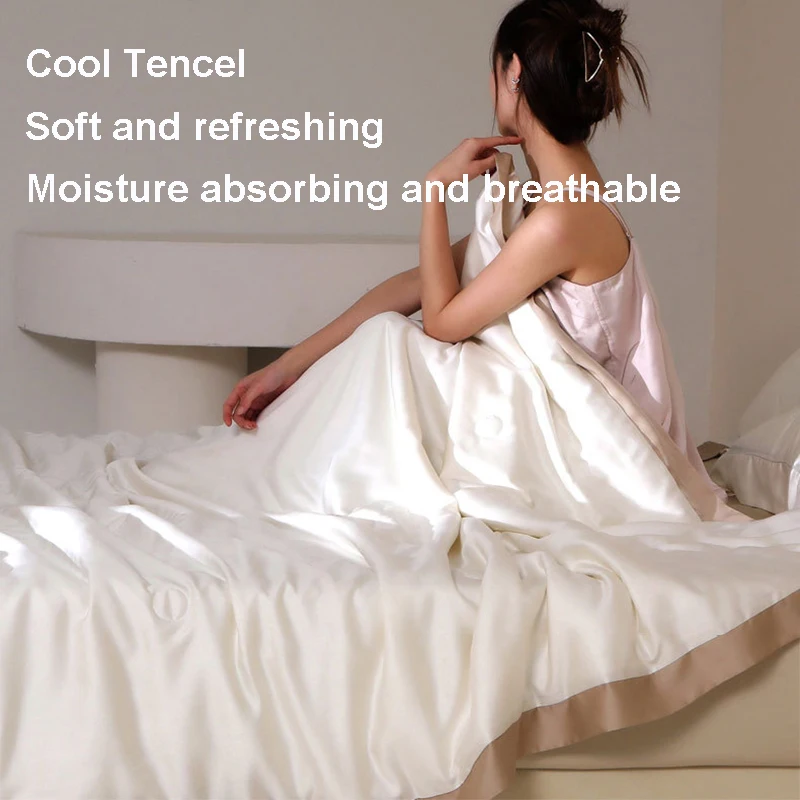
Summer Silk Layering Strategy
Summer calls for minimal, lightweight layering that maximizes silk’s natural cooling properties. The best silk bedding for summer employs these strategies:
- Use lower momme weight silk (19-22) for enhanced breathability
- Start with a silk fitted sheet as your foundation
- Replace heavy duvets with just a silk flat sheet or ultra-lightweight silk comforter
- Consider a silk duvet cover used alone without the insert on extremely hot nights
- Maintain silk pillowcases regardless of other adjustments
For different summer conditions:
– Mild nights (65-70°F): Lightweight silk duvet (2-4.5 tog)
– Warm nights (70-75°F): Silk flat sheet folded at foot of bed for optional coverage
– Hot nights (75°F+): Minimal layers, possibly just a silk fitted sheet
The moisture-wicking properties of silk become particularly valuable during humid summer nights, keeping you dry and comfortable when other materials would feel clammy.
Winter Silk Layering Strategy
Winter layering focuses on warmth without sacrificing breathability. Unlike synthetic materials that can cause overheating, silk provides consistent temperature regulation even in cold conditions:
- Choose higher momme weight silk (22-25) for greater durability and insulation
- Layer a silk flat sheet over your fitted sheet as the foundation
- Add a medium-weight blanket between sheet and duvet for adjustable warmth
- Use a higher tog silk duvet (9-13.5) for maximum insulation
- Consider a silk-filled duvet with silk cover for optimized temperature regulation
For different winter conditions:
– Mild winters (50-60°F): Medium-weight silk duvet (7-9 tog)
– Cold winters (35-50°F): Heavier silk duvet with additional blanket layer
– Very cold conditions (below 35°F): Maximum layering with silk base layers complemented by wool or cashmere
The key advantage of silk in winter is warmth without weight—you stay cozy without feeling restricted by heavy bedding.
Transitional Seasons: Spring & Fall Approach
Spring and fall present unique challenges with fluctuating temperatures. A flexible layering strategy allows quick adjustments:
- Maintain a consistent silk fitted sheet and pillowcase foundation
- Use a medium-weight silk flat sheet that can function as a light cover
- Keep a folded lightweight blanket at the foot of the bed for easy access
- Choose a medium-weight silk duvet (7-9 tog) that balances warmth and coolness
- Layer in a way that allows easy removal or addition of elements during the night
For unpredictable weather, prepare a “quick-change” setup with:
– A lightweight silk throw within reach
– A heavier blanket folded decoratively at the bed’s end
– Multiple pillow options with varying fill weights
This approach ensures comfort regardless of temperature fluctuations common during transitional seasons.
Quality Considerations for Silk Bedding Layers
The effectiveness of your silk bedding layers depends greatly on their quality. Understanding key indicators ensures you select pieces that deliver maximum benefit and longevity.
Understanding Momme Weight for Different Layers
Momme weight (pronounced “moe-me”) measures silk fabric density and serves as the primary quality indicator for silk bedding. The ultimate guide to momme weight in silk bedding provides comprehensive details, but here’s what you need to know for layering purposes:
| Bedding Component | Recommended Momme | Benefits at This Weight |
|---|---|---|
| Pillowcases | 19-22 momme | Balance of softness and durability where facial contact occurs |
| Fitted Sheets | 19-25 momme | Higher durability for frequent use and washing |
| Flat Sheets | 19-22 momme | Optimal drape and breathability |
| Duvet Covers | 19-25 momme | Sufficient weight to protect duvet while maintaining flow |
Lower momme weights (16-19) provide maximum breathability but may show wear more quickly. Higher weights (22-30) offer exceptional durability but with slightly less drape and breathability. For most users, the 19-25 range provides the optimal balance for bedding applications.
Silk Types and Weaves for Optimal Layering
Not all silk is created equal. For bedding applications, these distinctions matter:
- Mulberry silk represents the highest quality with long, uniform fibers that create smooth, durable fabric—ideal for all bedding components
- Charmeuse weave creates the signature lustrous surface and matte back typical in luxury bedding
- Silk satin refers to the weaving technique rather than the material and provides the smooth finish most associate with silk bedding
- Habotai silk, while less expensive, lacks the durability needed for frequent-use bedding items
Long-strand silk (from mulberry silkworms) creates fabrics with fewer joins between fibers, resulting in smoother texture and greater durability—essential qualities for bedding that will undergo regular use and washing.
Certifications and Quality Markers
When investing in silk bedding, look for these quality indicators:
- OEKO-TEX Standard 100 certification confirms the product has been tested for harmful substances
- 6A grade silk designation indicates the highest quality raw silk material
- Non-toxic dyes certification ensures colorfastness and safety
- Momme weight disclosure demonstrates transparency about material quality
These certifications matter not just for product quality but also for health considerations, as bedding remains in close contact with your skin for extended periods.
Styling Your Layered Silk Bed
Beyond comfort and function, a beautifully styled silk bed creates a visual focal point that enhances your entire bedroom’s appeal.
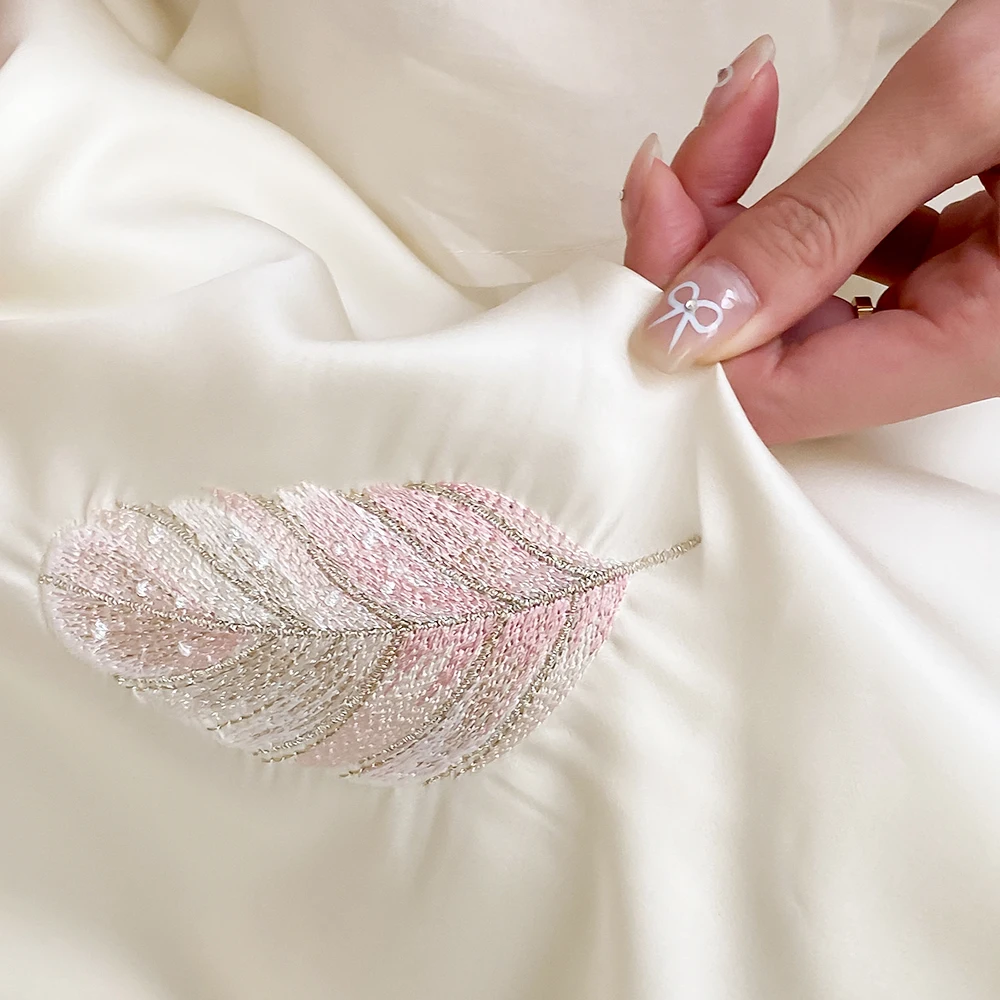
Color Coordination for Luxurious Aesthetics
The ultimate guide to styling luxury silk bedding begins with thoughtful color selection that enhances silk’s natural luster:
- Monochromatic schemes using varying shades of one color create sophisticated depth while showcasing silk’s varying light reflection
- Neutral palettes with ivory, champagne, silver, and soft gray provide timeless elegance
- Subtle contrasts between sheet and duvet colors add visual interest without overwhelming the senses
- Seasonal adjustments can be made through duvet covers and decorative elements while maintaining consistent base layers
Light interacts uniquely with silk’s surface, creating subtle luminosity that changes with viewing angle. This natural characteristic means even simple color schemes appear rich and dimensional when executed in quality silk.
Decorative Elements: Throws and Accent Pillows
The final touch in creating your silk sleep sanctuary comes from thoughtfully selected decorative elements:
- A cashmere or silk throw draped across the foot of the bed adds textural interest
- Decorative pillows in complementary fabrics create dimensional appeal
- Seasonal accents can be rotated while maintaining core silk components
- Textural contrasts (velvet, knits) highlight silk’s smooth finish
When selecting decorative elements, maintain a balance—too many can diminish the clean, luxurious appeal of silk. Often, just 2-3 carefully chosen pieces create the perfect finishing touch.
California King Silk Fitted Sheet, King Size Silk Fitted Sheet, Mulberry Silk Fitted Sheet, Queen Size Silk Fitted Sheet
Price range: $120.04 through $390.79 Select options This product has multiple variants. The options may be chosen on the product pageKing Size Silk Sheets, Pink Silk Sheets, Silk Flat Sheets
$132.96 Select options This product has multiple variants. The options may be chosen on the product pageKing Size Silk Pillowcases, Mulberry Silk Pillowcases, Queen Size Silk Pillowcases
Price range: $94.96 through $121.56 Select options This product has multiple variants. The options may be chosen on the product pageMulberry Silk Fitted Sheet, Mulberry Silk Sheets
Price range: $486.21 through $944.97 Select options This product has multiple variants. The options may be chosen on the product page- Price range: $153.18 through $158.04 Select options This product has multiple variants. The options may be chosen on the product page
100% Silk Sheets, Queen Size Silk Fitted Sheet, Queen Size Silk Pillowcases, Queen Size Silk Sheets
Price range: $259.05 through $284.13 Select options This product has multiple variants. The options may be chosen on the product page
Preserving Your Silk Bedding Investment
Quality silk bedding represents a significant investment in your sleep quality. Proper care ensures you’ll enjoy its benefits for years to come.
Essential Care for Layered Silk Bedding
Maintaining silk bedding’s luxurious feel and appearance requires specific care techniques that transform sleep quality long-term:
- Washing: Use gentle, pH-neutral detergents specifically formulated for silk
- Water temperature: Always use cold water to prevent fiber damage and shrinkage
- Cycle selection: Choose delicate cycles or hand wash options
- Drying: Air dry away from direct sunlight, which can fade colors and weaken fibers
- Ironing: Use the lowest heat setting with a cloth barrier if absolutely necessary
- Storage: Store clean, fully dry silk in breathable cotton bags, not plastic
Rotating your silk bedding components extends their life by distributing wear more evenly. Having multiple sets allows adequate rest time between uses, particularly for pillowcases that experience the most direct contact.
When to Replace Silk Bedding Components
Even with excellent care, silk bedding components will eventually show signs of wear. Knowing when to replace each element maintains your bed’s comfort and appearance:
- Pillowcases: Replace when shine diminishes noticeably or edges begin to fray (typically 2-3 years with regular use)
- Sheets: Look for thinning areas, particularly in high-friction zones (generally 3-5 years)
- Duvet covers: Replace when fabric weakens or closures fail (3-7 years depending on use)
- Silk-filled duvets: Watch for flattening or uneven fill distribution (5-10 years with proper care)
Strategic replacement of individual pieces allows you to maintain quality while spreading the investment over time. Often, replacing pillowcases most frequently while extending the life of larger components provides the best balance of luxury and value.
Is Pure Silk Bedding Always the Best Choice?
While pure silk offers unmatched luxury, practical considerations sometimes warrant exploring alternatives or combinations. For households with young children, active pets, or extremely tight budgets, a hybrid approach may be sensible.
Consider these practical factors:
- Lifestyle needs: Active households might benefit from more durable bottom layers with silk reserved for pillowcases and duvet covers
- Budget priorities: Investing in silk pillowcases first delivers immediate skin and hair benefits while other components can be upgraded over time
- Maintenance capacity: Those without access to gentle washing facilities might choose silk components that require less frequent cleaning
Quality silk alternatives like bamboo lyocell or high-thread-count cotton sateen provide some similar benefits at lower price points, though they don’t fully replicate silk’s unique properties.
How Do Different Sleeping Positions Affect Silk Bedding Needs?
Your preferred sleeping position affects how you interact with your bedding, making certain silk components particularly important based on your habits:
Side sleepers benefit most from:
– Higher momme weight pillowcases (22+) to withstand increased facial contact
– Multiple silk pillows for proper head and neck alignment
– Silk fitted sheets that reduce pressure point friction at shoulders and hips
Back sleepers should prioritize:
– Perfect flat sheet placement that allows free movement
– Medium-support silk pillows that maintain proper neck alignment
– Even distribution of duvet weight across the body
Stomach sleepers need:
– Ultra-breathable silk components to prevent overheating
– Thinner, softer pillows to avoid neck strain
– Careful duvet selection to prevent feeling restricted
For those who change positions throughout the night, a balanced approach with emphasis on smooth-moving sheets and adaptable layers accommodates this variability while maintaining comfort.
By understanding your unique sleeping style and preferences, you can create a silk bedding sanctuary perfectly tailored to your needs, ensuring each night’s sleep is as restorative as possible.

